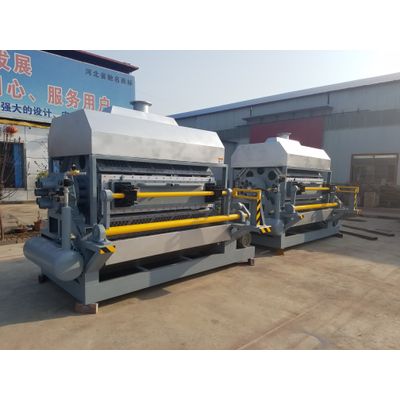

- Home
- Companies
- Beston Group Co., Ltd.
- Articles
- Understanding the Benefits of Quail Egg ...

Understanding the Benefits of Quail Egg Tray Making Machine
The quail egg tray making machine plays a pivotal role in modern poultry packaging systems, delivering functionality that meets the delicate handling requirements of smaller eggs. As quail egg production scales globally due to rising consumer demand and nutritional interest, the need for efficient, reliable, and protective packaging has grown in parallel. This machine provides an optimized solution, producing molded trays that safeguard fragile eggs from mechanical damage during transportation and storage.
Specialized Design for Niche Applications
Unlike conventional egg packaging machinery, the quail egg tray making machine is calibrated for smaller cavities and higher precision. The mold specifications are tailored to fit the unique dimensions of quail eggs, which are significantly smaller and more brittle than standard chicken eggs. This reduces movement within the tray, minimizing impact force and breakage rates.
The equipment typically integrates a pulp molding system that utilizes recycled paper and water to form the trays. This method ensures uniformity, structural integrity, and biodegradability. The end product is lightweight yet resilient, offering effective shock absorption without compromising environmental standards.
Operational Efficiency and Automation
The automation level of a quail egg tray making machine made by pulp moulding machine manufacturers varies based on configuration, but even basic systems offer substantial improvements over manual packaging processes. Automated pulp feeding, vacuum molding, and thermal drying mechanisms streamline production, reduce labor dependency, and improve throughput consistency.
High-capacity models can manufacture thousands of trays per hour, allowing poultry farms and packaging facilities to maintain pace with daily egg collection volumes. Additionally, the integration of drying lines—either brick-built or metal-based—enhances energy efficiency and shortens production cycles, improving return on investment over time.
Cost Reduction and Resource Optimization
With an operational model based on recyclable input materials, the quail egg tray making machine enables significant cost reductions in raw material sourcing. Wastepaper, agricultural residue, and carton offcuts are commonly used as feedstock, converting low-value waste into commercially viable packaging.
Maintenance requirements are minimal when the machine is operated within standard guidelines. Wear-resistant parts, such as stainless-steel molds and reinforced drying chambers, extend equipment lifespan and reduce downtime, resulting in uninterrupted output for extended periods.
Environmental and Market Advantages
In the context of tightening environmental regulations and growing consumer awareness, sustainable packaging offers a competitive edge. The quail egg tray making machine aligns with eco-certification requirements and circular economy principles. Trays produced are biodegradable and compostable, significantly reducing landfill dependency and eliminating microplastic contamination.
From a market standpoint, retailers and distributors benefit from visually consistent, stackable packaging that enhances product presentation and reduces logistics costs. The trays' dimensional stability under varying humidity and temperature conditions ensures dependable protection across long-distance transport networks.
Conclusion
The quail egg tray making machine serves as a critical asset for producers seeking to modernize packaging processes while adhering to environmental mandates. It delivers precision, efficiency, and sustainability, meeting both operational and regulatory requirements. For quail egg producers aiming to scale operations and strengthen supply chain integrity, the machine offers a robust, future-ready packaging solution.
